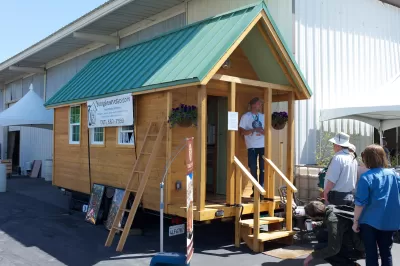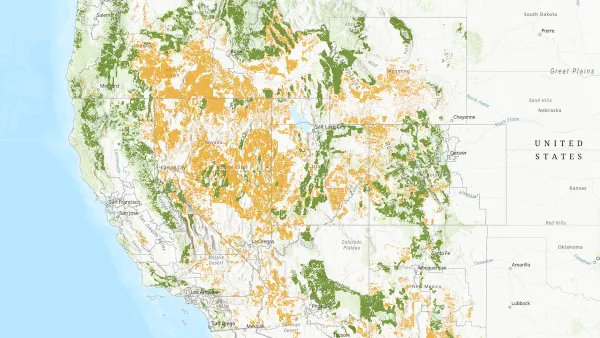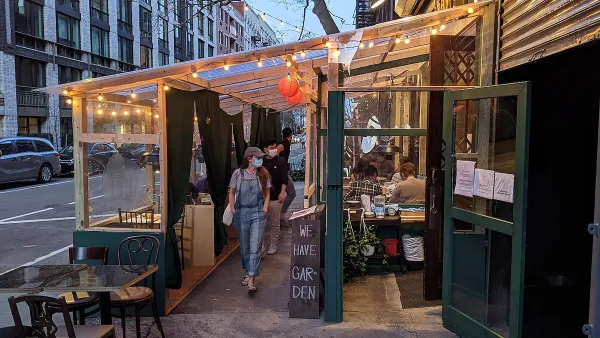Clocking in at less than 500 square feet, tiny houses are in greater and greater demand. They've been touted as a means to address affordability, inequality, homelessness, and environmental concerns. But regulatory issues are holding them back.

As the median size of new single-family homes continues to rise, there's been movement on the other end of the spectrum. A diverse segment of prospective residents (including young people, seniors, and low-income people) are interested in standalone dwellings of under 500 square feet. The problem, as Rebecca Beitsch writes, is that tiny houses are often illegal or over-regulated.
Certain areas affected by the affordability crisis have begun to change tack. "Cities such as Washington, D.C., and Fresno, California, have eased zoning and building rules to allow them, and in May California's housing department issued guidance to help builders and code enforcers know which standards they need to meet."
But the fact remains: tiny houses often fly in the face of existing code. "The difficulty has been where to place them. Those built on foundations must meet local building and zoning regulations. But many tiny houses are built off-site, sometimes without knowing where they will ultimately rest."
Note that in this context, tiny houses aren't accessory dwellings. They stand alone. "As of now, few cities allow stand-alone tiny houses. Most communities have minimum square footage requirements for single-family homes mandating that smaller dwellings be an 'accessory' to a larger, traditional house."
The good news is that while larger cities are still resisting the phenomenon (perhaps inadvertently), some small towns have made it easier to live in tiny houses.
FULL STORY: Tiny Houses Are Affordable, Energy-Efficient and Often Illegal

Planetizen Federal Action Tracker
A weekly monitor of how Trump’s orders and actions are impacting planners and planning in America.

Map: Where Senate Republicans Want to Sell Your Public Lands
For public land advocates, the Senate Republicans’ proposal to sell millions of acres of public land in the West is “the biggest fight of their careers.”

Restaurant Patios Were a Pandemic Win — Why Were They so Hard to Keep?
Social distancing requirements and changes in travel patterns prompted cities to pilot new uses for street and sidewalk space. Then it got complicated.

Platform Pilsner: Vancouver Transit Agency Releases... a Beer?
TransLink will receive a portion of every sale of the four-pack.

Toronto Weighs Cheaper Transit, Parking Hikes for Major Events
Special event rates would take effect during large festivals, sports games and concerts to ‘discourage driving, manage congestion and free up space for transit.”

Berlin to Consider Car-Free Zone Larger Than Manhattan
The area bound by the 22-mile Ringbahn would still allow 12 uses of a private automobile per year per person, and several other exemptions.
Urban Design for Planners 1: Software Tools
This six-course series explores essential urban design concepts using open source software and equips planners with the tools they need to participate fully in the urban design process.
Planning for Universal Design
Learn the tools for implementing Universal Design in planning regulations.
Heyer Gruel & Associates PA
JM Goldson LLC
Custer County Colorado
City of Camden Redevelopment Agency
City of Astoria
Transportation Research & Education Center (TREC) at Portland State University
Camden Redevelopment Agency
City of Claremont
Municipality of Princeton (NJ)





























